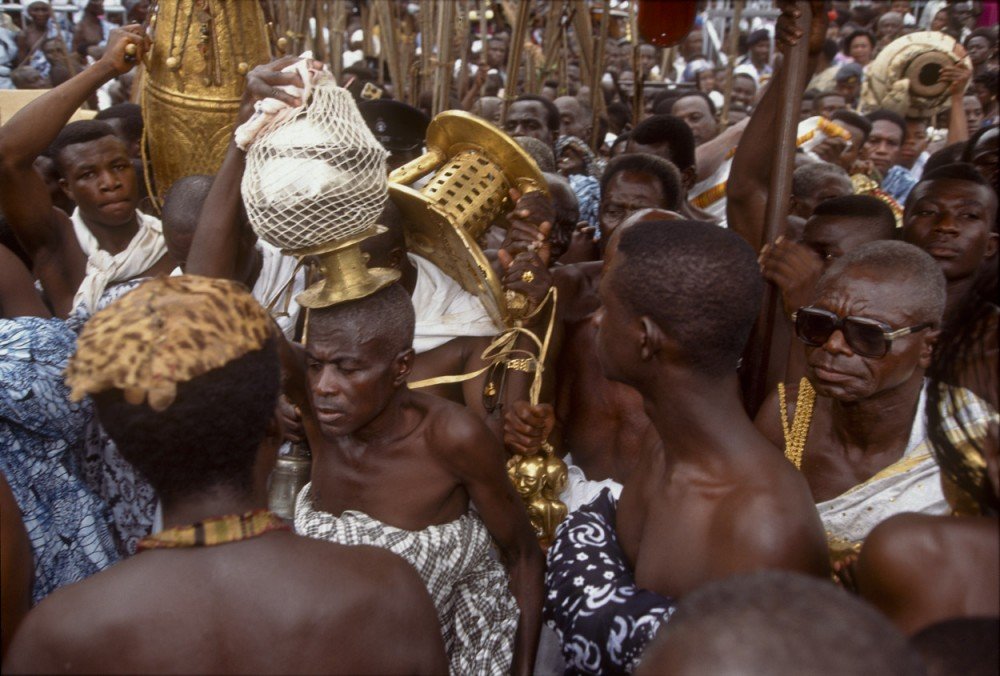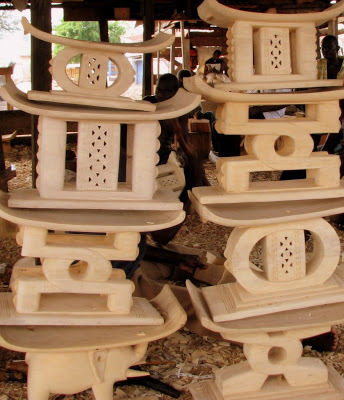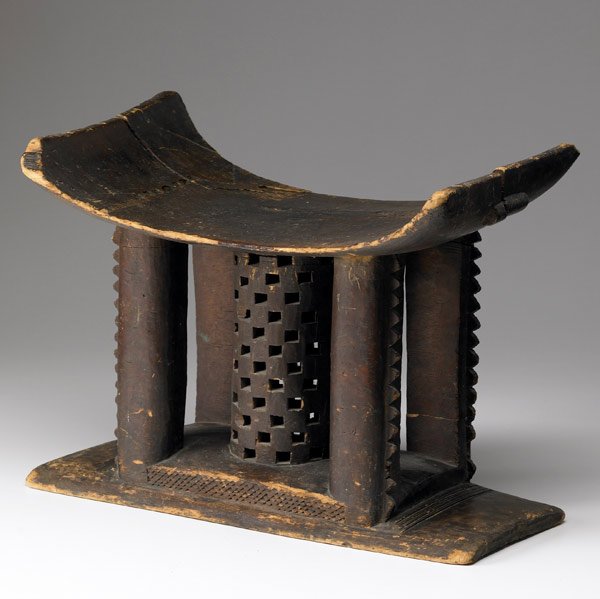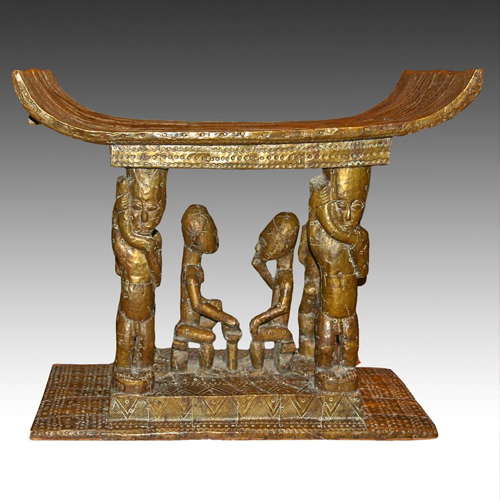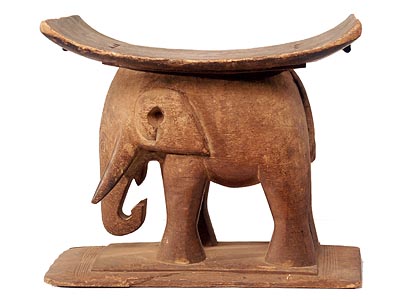|
ASHANTI STOOLS ; STOOLS OF AKAN SPEAKING PEOPLE
IN GHANA
To Accra, Vodafone Ghana and Bawku, Millicom Ghana Limited; I first want to express my deep apologies to you both and others who some how managed find the stool page. A page on stools should never be messed up. When I find the things on line that I need for a new topic. I often copy everything that is in sight. Then I clone one of my web pages, delete all of the pictures, then put new ones in their place and leave until I have time to work on text and labels.
The World Wide Web can never be trusted to preserve African and African Diaspora heritage. Always make several copies of every web site you publish. I have been on the web since 1998 starting with African Metropolis. Earth Metropolis didn’t appear until 2001. I have seen many come and disappear. Some of the small web sites I copied the entire site pictures folders and all, because if the web site disappears you may never see it again.
I can be reached at clark_claude@yahoo.com. My regular E-mail address is down right now. I don’t have any information on these stools yet. My books purchased in Ghana are in storage. I won’t have access to them for a few years yet. Any help that you can provide for now will be greatly appreciated. Be sure you proved credits with any material you provide. So that I can give the writers or speaker credit. 
Linguist
Staff (Oykeame), 19th–20th century Ghana; Akan, Asante Gold foil, wood,
nails; H. 61 5/8 in. (156.53 cm) Gift of the Richard J. Faletti Family,
1986 (1986.475a–c) See complete record --
Magnificent
gold-covered staffs like this one are carried by high-ranking officials
within the courts of Akan chiefs in an area of West Africa once known as
the Gold Coast. Because they are a society that originally had no written
tradition, the Akan peoples place an enormous emphasis on speech. The
spoken word, in the form of axioms and stories, is the repository of Akan
custom and values, and a complete mastery of proverbial lore, combined
with an eloquent and insightful way of conveying it, is considered the
mark of intellect of highly esteemed individuals. Those who possess this
knowledge and an articulate command of language may be appointed as court
linguists, the most important nonroyal court officials.
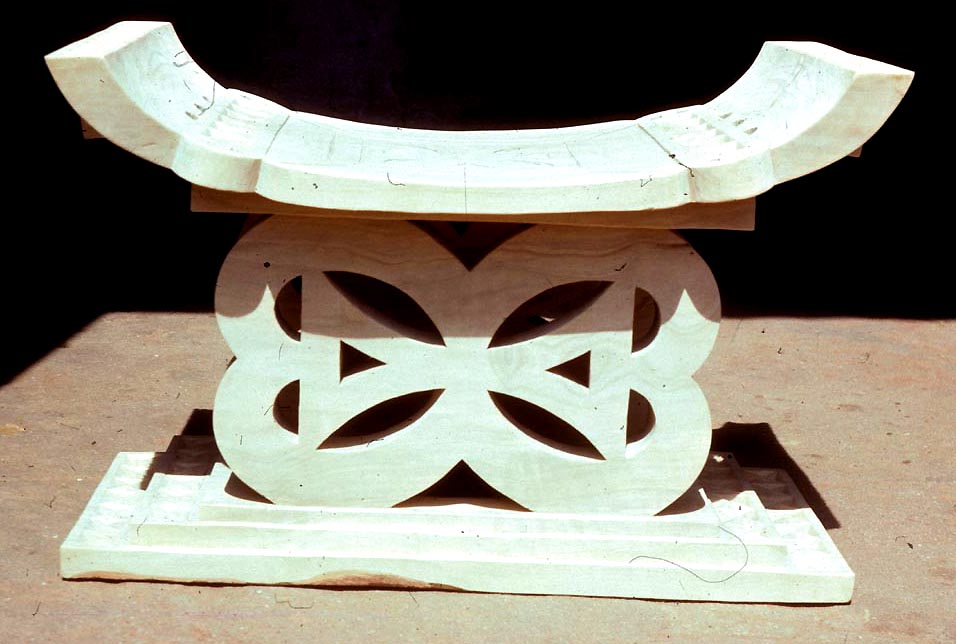 | 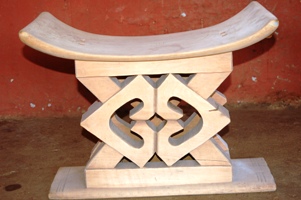 |
|---|
Court linguists
play an invaluable role in Akan circles of leadership. Their vast
knowledge and superior diplomacy make them essential as counselors,
ambassadors, legal experts, and historians, and most Akan rulers keep
several in their employ. The linguists' staffs of office, carved of wood
and covered in gold foil, are said to be modeled after the cane used by
the first court linguist, a woman who carried a cane because of her great
age.
The finials of
these staffs commonly illustrate proverbs that assert the ruler's
legitimacy and capabilities or praise the linguist's experience and
sagacity. This staff is surmounted by two human figures flanking a large
web, with a spider positioned at its center. The finial refers to the
saying, "No one goes to the house of the spider Ananse to teach him
wisdom." Ananse the spider, who brought wisdom and taught weaving to the
Akan, is the originator of folk tales and proverbs and is thus linked to
linguists. Here, Ananse is the ultimate repository of erudition, as is the
linguist at an Akan court, neither of whom should be challenged inthat
domain.
Although this
artwork appears on the 20th-century segment of the Timeline, it is
ascribed a date of 19th–20th century. Linguist Staff (Oykeame)
| 